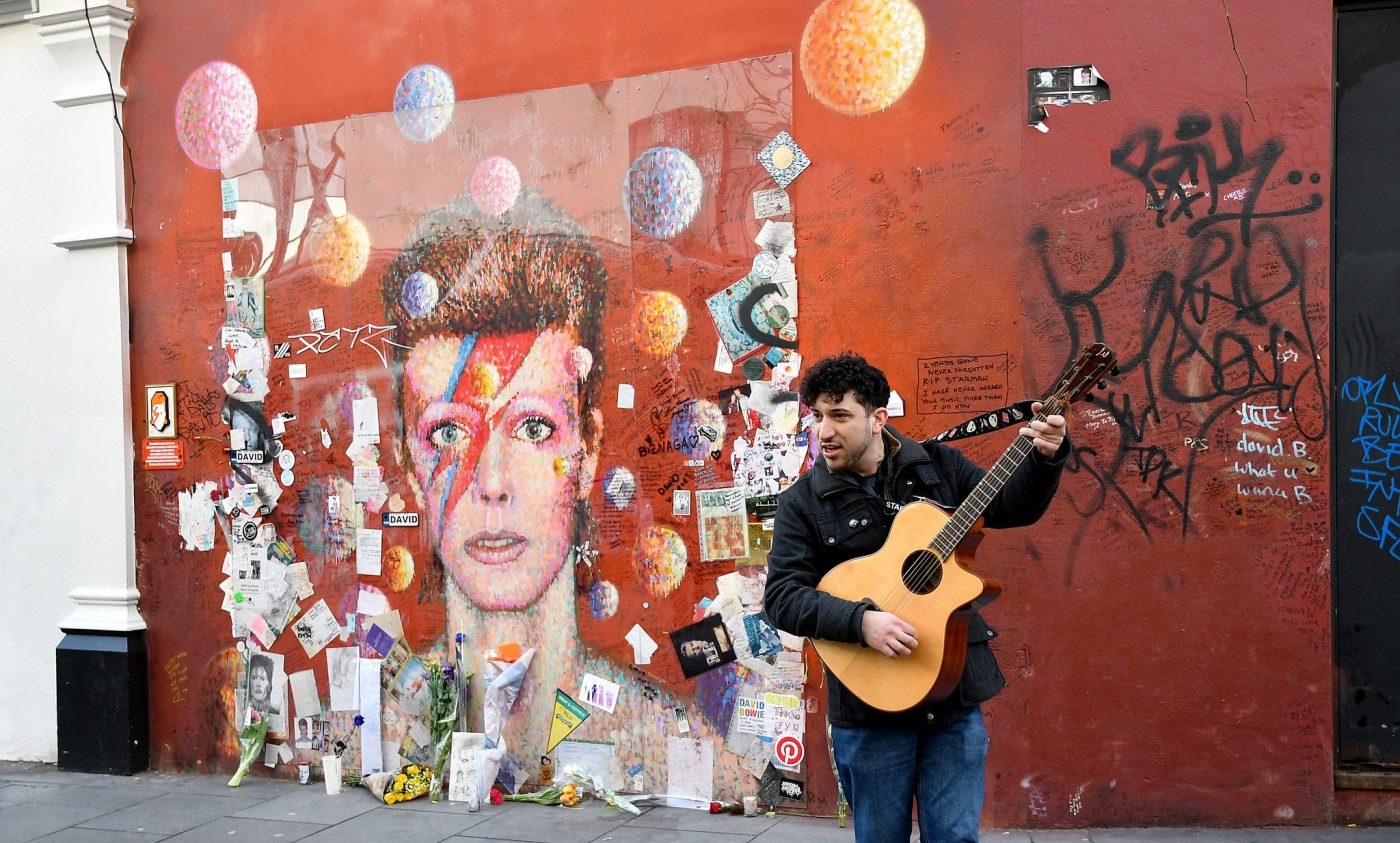The albums on my wall: discussing the artistry behind my favourite album covers
The simultaneous resurgence of vinyl records, alongside the digitalisation of music, has changed the status of the humble album cover forever. The 21st century has seen the bedrooms of the youth become a personal ‘white cube’, brandishing the most iconic images in pop culture history, with the digital age contributing to the production and circulation of classics-in-the-making.
With this in mind, I have taken a closer look at the albums on my own bedroom walls, evaluating their personal and cultural importance, considering debates around why they have achieved their iconic artistic status, or why they are deserving of appreciation.
The ingenuity of the physical composition, along with the astounding concept of an underwater bedroom, speaks volumes to the [Titanic Rising] cover’s artistry.
Whimsical and nostalgic, Weyes Blood’s Titanic Rising (2019) is not only musically captivating, but boasts an album cover which mirrors the surrealism of her discography. Depicting a bedroom submerged in water, streamlined through the aesthetics of nineties youth culture, she provokes debates surrounding adolescence, escapism, and modern love. The imagery on the Titanic Rising cover solidifies its iconic status by evoking feelings of personal empathy towards the gut-wrenching themes of sentimentality and childhood. Moreover, the ingenuity of the physical composition, along with the astounding concept of an underwater bedroom, speaks volumes to the cover’s artistry. The pairing of fantastical manipulation of light and texture, especially depicted in the bedroom window, reminds the viewer of the chiaroscuros of the brushwork of a Renaissance master. This is a personal favourite because of the pure spectacle; if I could claim an album cover as my own, it would be this.
Bowie’s symbolic lightning bolt transcends cultural boundaries.
David Bowie’s Aladdin Sane (1973) is exemplary in developing an iconic motif that represents both the artistic presentation of a musician and their storytelling. Bowie’s symbolic lightning bolt transcends cultural boundaries through its replication and interjection into the media, with supporters and artisans having emulated the imagery through personal creative outlets. The cover shares the story of Bowie’s schizophrenic half-brother, with the iconic flash representing the split personality of ‘A Lad Insane’. Often seen as a source of inspiration, in both fashion and beauty industries, Bowie has influenced major brands such as Alexander McQueen and Jean Paul Gautier. This cover is a certified cult classic with a vastly influential nature.
The cover becomes an amalgamation of ideologies, relationships, the glamourised dreamscape of California and the represented dangers of hope.
Widely regarded as one of the most iconic female singers of the 21st century, Lana Del Rey crafts albums and covers which continue to shape our generation. Del Rey’s establishment of trademark styles and signature looks cement her status within pop culture. From her debut album Born to Die (2012), to the Grammy-nominated Norman Fucking Rockwell! (2019), Del Rey’s cover art always speaks to the poetry and aesthetics of her music. Considering the latter, there is an evident relationship between the title and the artist Norman Rockwell, portraying a version of Americana seen in both artists’ work. On the cover, Del Rey references classic sixties beach culture and art with Liechtenstein-esque lettering, while portraying the destruction of LA on the horizon. There are debated suggestions that this is representative of Lana leaving behind her established character, one that was carved from the dichotomy of Old Hollywood glamour, seen through the setting of a burning California. This idea becomes latterly evidenced by Del Rey’s aesthetic changes and subsequent album covers. The cover therefore becomes an amalgamation of ideologies, relationships, the glamourised dreamscape of California and the represented dangers of hope.
If you are interested in finding out more about iconic album covers, some other examples with unique artistry and backstories include Deftones’ Around the Fur (1997), Wolf Alice’s Visions of a Life (2017), The Smiths’ Meat is Murder (1985) and The Beatles’ Abbey Road (1970).

Comments